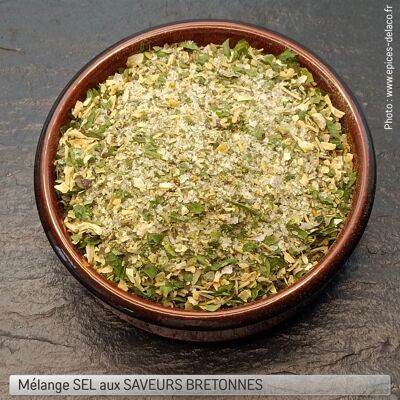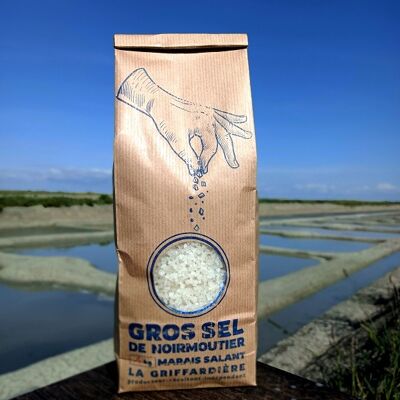


Coarse gray Atlantic sea salt is an unrefined salt harvested from salt marshes located along the Atlantic coasts. This salt is obtained by the natural evaporation of seawater, captured in shallow basins. Its distinctive grayish color comes from minerals and sediments found in seawater. The appearance of coarse gray salt is generally larger and more irregular compared to regular table salt. The crystals are often slightly moist, giving them a grainy texture and pleasant mouthfeel. Due to its artisanal production and traditional harvesting process, Atlantic Coarse Gray Sea Salt is valued for its robust flavor and rich mineral content such as magnesium, calcium and potassium. It is often used by chefs and cooking enthusiasts to enhance the flavor of dishes, especially on grilled meats, fresh vegetables or seafood. Its natural character and its provenance from the sea give it an authenticity that attracts salt connoisseurs looking for high quality products for their culinary preparations. The coarse gray sea salt has been dehydrated to remove all traces of moisture. Coarse gray sea salt is an unrefined and non-iodized salt that retains its natural minerals and trace elements. It is often used in cooking to season, cook, or even present dishes. -Seasoning: Sprinkle coarse gray salt on your dishes just before serving them to enhance the flavors. It can be used on meats, fish, grilled vegetables, salads, etc. -Steaming: When steaming vegetables, add a few grains of coarse salt to the water to give a subtle flavor to the vegetables. -Salt crust for meat or fish: Coat a piece of meat or fish with a crust of coarse salt before cooking it in the oven. This can help maintain tenderness and enhance flavors. -Cooking in foil: Use coarse salt to create a bed under foods cooked in foil (for example, fish). This adds flavor and helps maintain moisture. -Cleaning seafood: Use coarse salt to clean shellfish such as mussels. It can help remove impurities and make them cleaner before cooking. -Presentation: Arrange the coarse salt in small bowls or ramekins on the table so that everyone can adjust the seasoning to their taste. -Salt for grilling: Use coarse salt to sprinkle meats just before grilling. This creates a flavorful crust on the surface. -Conservation: Coarse salt can also be used to preserve foods, such as pickles or olives. It absorbs excess moisture and helps prevent deterioration. When using coarse gray sea salt, it is important to measure it carefully, as it can be saltier than standard table salt due to its coarse texture.

















